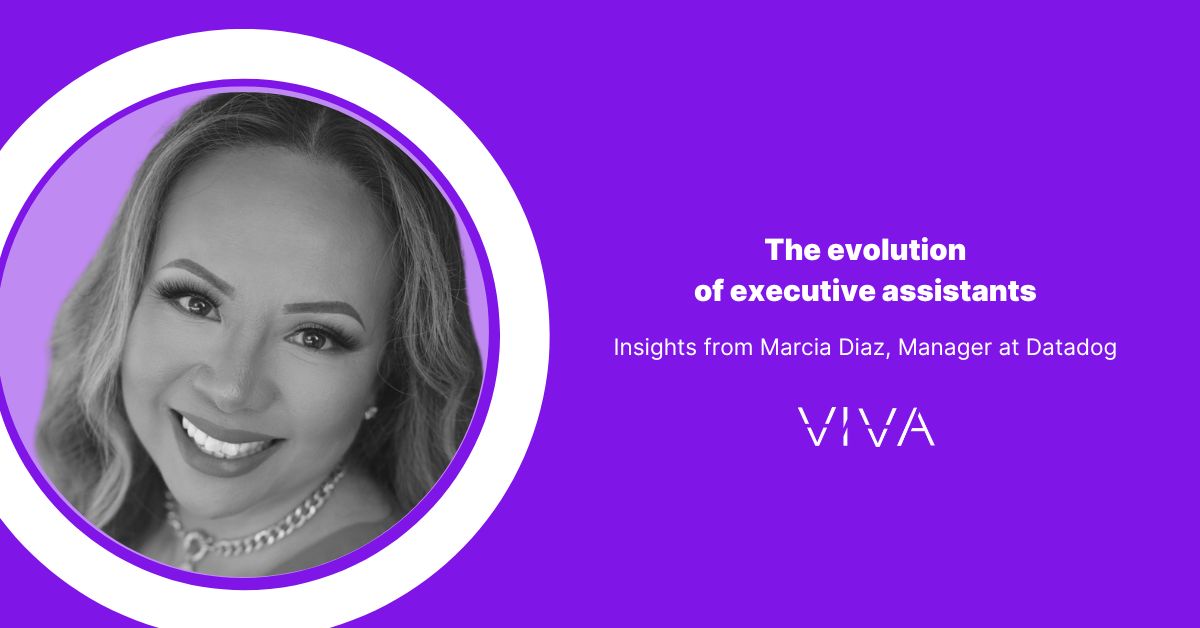Executive Assistants
This is how EAs find time in executives’ calendars (template)

Expert calendar compartmentalization requires a strategic partner who has training and experience in productivity best practices, comprehends the technical aspects of calendar management, and understands you and your business.
Our executive assistants manage high-performing executives’ calendars using several techniques, including calendar compartmentalization. Actually, calendar compartmentalization is what our CEOs use every day to maximize their productivity.
In this blog post, you’ll learn what calendar compartmentalization is, how to implement it as a productivity strategy, and how executive assistants can be vital to its success.
Why is compartmentalization so important for startup executives?
Even though everyone knows that multitasking doesn’t promote productivity, startup executives still find themselves multitasking. Wearing many hats is startup status quo and it has helped many companies make it all the way to a successful initial public offering, as was the case with Airbnb’s three co-founders. So the challenge is: How can an executive wear so many hats without multitasking themselves to inefficiency?
Executives across industries in startups Series B and above use calendar compartmentalization to achieve this.
Calendar compartmentalization is a method of organizing the calendar into distinct blocks or segments based on different types of tasks or goals. By grouping similar or related tasks, calendar compartmentalization can reduce context switching, increase focus, and improve productivity.
Unwanted effects like cognitive load from context switching happen when there are constant changes between one task and another. Because startup executives need to change context constantly — from product development, marketing, sales, and fundraising, to hiring — their cognitive load can result in plummeting productivity.
As a strategy to maintain or increase productivity, calendar compartmentalization works best next to a strategic partner, like an executive assistant.
Use this template to compartmentalize your calendar and regain control of your time.
These are some calendar compartmentalization best practices that startup executives use:
- Creating focused time blocks for deep work and strategic thinking on a regular, personalized cadence.
- Segmenting the calendar into blocks of calls depending on their needs. These might include customer calls, internal calls, and family time blocks.
- Assigning different themes to each day of the week. Monday could be the day for focused time, Tuesdays for internal meetings, Wednesdays and Thursdays for external meetings, and Fridays as flexible days. Execs still prioritize their time with customers or investors, but having a structure allows them to be more focused.
- Setting DNS (do not schedule) policies for personal or family commitments, such as picking up kids, running errands, or having dinner. This allows executives to always have time for their families and also get their job done.
- Leveraging automated meeting scheduling tools to find optimal time slots and avoid double-booking. Calendly is one such tool, allowing execs and EAs to establish open slots for meetings so there’s always an open meeting time without disrupting the strategized structure.
We’ve heard customers say, “I understand the benefits and principles of calendar compartmentalization, color coding, and prioritization, but I lack a system or a tool to implement them effectively and consistently. I often struggle with keeping up with changes in my schedule, such as canceling some meetings and taking others, and I feel overwhelmed and stressed.”
One of the best and least talked about benefits of calendar compartmentalization is that executives don’t need to implement it themselves. Instead, they just benefit from it. Implementation and management of calendar compartmentalization are possible with the support of a high-performing executive assistant who has training and experience in this kind of recurring, high-impact task.
How EAs make this work for startup executives across the board
Calendar compartmentalization works for all structure levels and executive functions, especially when execs are overwhelmed. Whether the exec is more structured or less structured, whether they are a CEO, a CMO, a CPO, or any other role, calendar compartmentalization can optimize their time and energy. EAs can tailor the calendar to suit the exec’s preferences and needs, such as their meeting patterns, their exceptions, their downtime, and their priorities.
EAs make calendar compartmentalization work for their execs by being their business partners, gatekeepers, and time protectors. EAs can collaborate with their execs to understand their vision and goals and align the calendar accordingly. Executive assistants can also filter and manage incoming requests and invitations, and ensure that only the most relevant and important ones get on the calendar. They can also safeguard the executive’s time from any distractions or interruptions, respecting their boundaries and creating balance.
Leveraging their technical knowledge and expertise, executive assistants make calendar compartmentalization more effective and efficient. They use various tips and tools to manage the calendar, such as Google Workspace, and customize them for more intuitive personalization and productivity. EAs can also follow up on scheduled meetings, whether professional or personal, and make sure that all materials are prepared and attendance is confirmed.
Calendar compartmentalization is one of the superpowers of an executive assistant, who can make a huge difference for startup executives. By applying this technique, EAs can help their executives achieve more with less stress and more productivity.
How does calendar compartmentalization work?
Calendar compartmentalization is a strategy to make the most of your calendar and your time. At Viva, we have a team of executive assistants who are calendar compartmentalization experts. They can help you create a consistent, predictable, and optimized schedule that suits your needs and interests.
All you need to do is share access to your calendar and organizational chart with your assigned executive assistant. Then, you need to fill out a preferences form that will help your EA understand your goals, priorities, and preferences. Using that form, your EA will prepare a personalized calendar proposal for you in Notion, which you can review and approve. Once you are happy with the proposal, your EA will implement it and manage your schedule for you.
Then, you just sit back sit back and benefit from this strategy.
Our CS team has seen dozens of calendars and this is their advice
- Don’t attend every meeting to which you are invited. Many updates or meetings can be done asynchronously through email, chat, or video messages. Avoiding meeting overload will free up more time for your focus blocks and reduce interruptions.
- Reduce meeting times by setting shorter durations, such as 45 minutes instead of an hour, or 30 minutes instead of 45 minutes. This will allow you to have more targeted discussions and focus, while also creating buffer time between meetings. We recommend Viva co-founder Fineas Tatar’s advice to make your meetings shorter. (link to publication)
- Always add an agenda to your meetings, and don’t attend a meeting without one. An agenda ensures everyone knows the purpose and expected outcomes of the meeting. An agenda will also help everyone prepare for the discussion and keep the meeting on track and on time.
- Add a to-do list to your focus time slots so that you already know how you will spend your time. A to-do list will help you avoid procrastination and distraction, while also measuring your progress and achievements.
- Avoid going overtime in meetings. In this way, you’ll make sure your schedule works as planned/compartmentalized but always make room when it’s necessary to close off important topics.
3 golden rules to know if you need more structure in your calendar to help you save time
How do you know if you need more structure in your calendar? Here are three golden rules that can help you identify whether your current calendar is working for you or against you:
- Your DNS (do not schedule) time is always overbooked. DNS time is the time you reserve for your personal or family commitments, such as picking up kids, running errands, or having dinner. If you find yourself constantly breaking or compromising your DNS time because of work-related meetings or tasks, then you need more structure in your calendar. Structure and protected DNS time can have a positive impact on your personal life without impacting your company negatively.
- If you take a customer call, your 1:1s are impacted. Customer calls are important for building relationships and getting feedback from your users. However, they should not come at the expense of your 1:1s with your direct reports or peers. 1:1s are essential for maintaining alignment, collaboration, and trust within your team and organization. If you find yourself frequently rescheduling or canceling your 1:1s because of customer calls, then you need more structure in your calendar. You need to segment your calendar into different blocks for customer calls and 1:1s, and avoid any conflicts or overlaps between them.
- You spend more time scheduling meetings than attending them. Scheduling meetings can be a tedious and time-consuming process, especially if you have to deal with multiple parties, time zones, preferences, and availability. If you find yourself spending more time on finding a suitable time slot for a meeting than on preparing or participating in the meeting itself, then you need more structure in your calendar. We recommend you leverage automated meeting scheduling tools that can help you avoid double booking and find optimal time slots for your meetings. There are also tools like Calendly to let others book meetings with you based on your availability and preferences.
Download the Viva template to compartmentalize your calendar
Viva’s Calendar Compartmentalization template has been used by startup executives from Series B and C companies, backed by Sequoia, Softbank, Coaute, Lightspeed, a16z, Y Combinator, Khosla, and others. They have found value in becoming more structured through their EAs and are even enjoying vacation time completely off the grid.
The Calendar Compartmentalization template from Viva has slots for personal time, 1:1s, customer calls, internal and external meetings, sales, customers, and interviews, and is highly customizable to ensure your EA can personalize it to your specific needs and wants and to your personal preferences and your industry. This template can be used as a starting point to create your own calendar proposal. Your EA will then implement it and manage your schedule for you.
Click on the download link to be redirected to a Notion page where you can view and copy the template. Don’t hesitate to get in touch with us if you have questions or feedback. Someone from our team will be happy to help you set this up.








